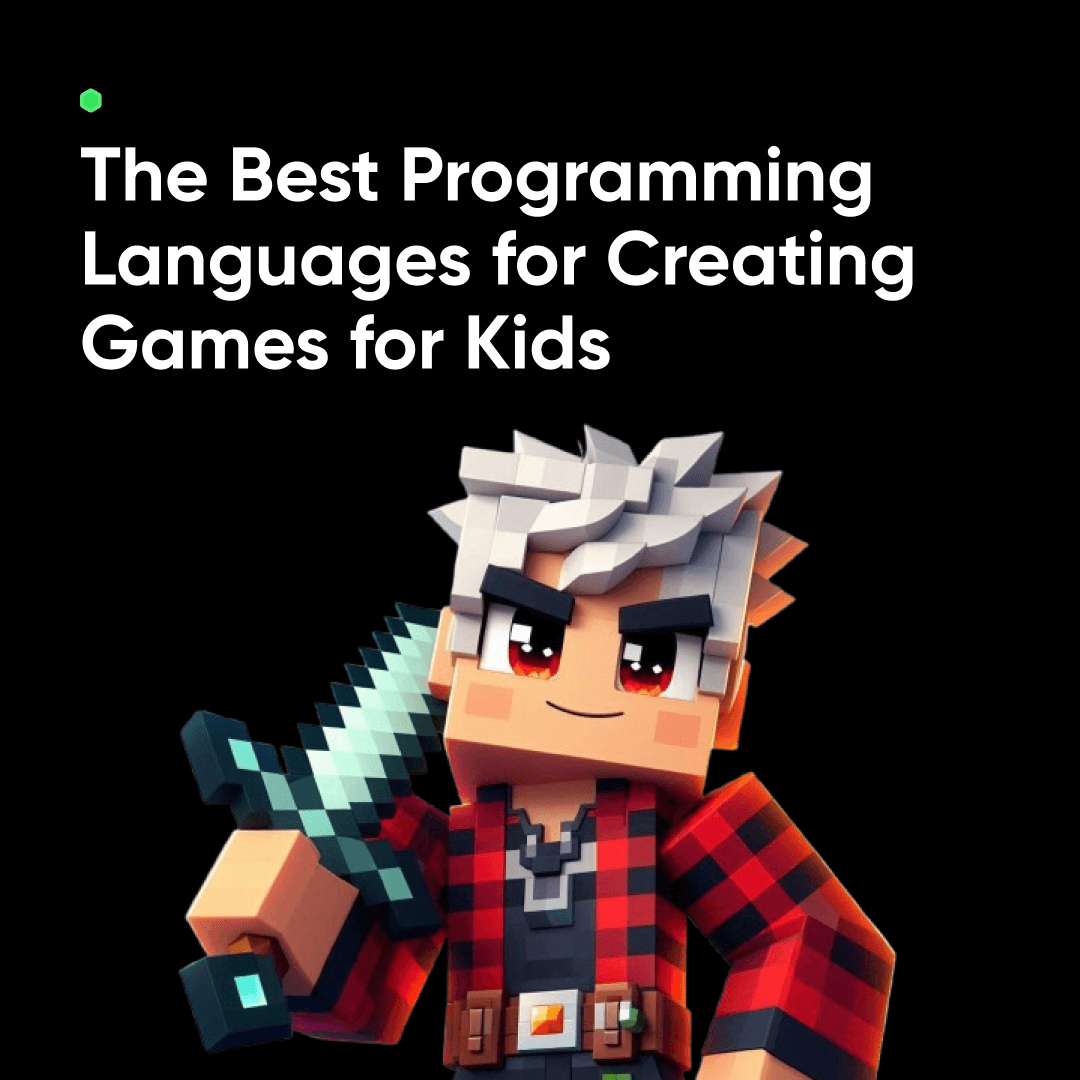The Best Programming Languages for Creating Games for Kids
Nov 15, 2024
In the world of game development, programming is the key to bringing ideas to life. When it comes to creating games for kids, the choice of programming language becomes even more important. It should be simple, fun, and accessible to young learners, while still being powerful enough to build engaging games.
So, what are the best programming languages for creating games that kids can not only play but also understand and create themselves? Let’s explore some of the most popular programming languages that strike a balance between learning and game design, highlighting their features, advantages, and real-world applications.
1. Scratch
Why It's Great:
Scratch is a top choice for young learners who want to dip their toes into game development. Developed by MIT, Scratch offers a visual, block-based interface that makes coding as simple as dragging and dropping blocks. This removes the need for typing code and minimizes errors, which makes it an ideal entry point for kids aged 6-14.
Key Features:
Visual Programming: Kids don’t need to worry about syntax, allowing them to focus on logic and creativity.
Drag-and-Drop Interface: Colorful blocks simplify the coding process.
Great Community: Scratch has a vibrant online community where kids can share their projects, get feedback, and learn from others.
Cross-Platform: Works in most web browsers, meaning there’s no need to download extra software.
Examples of Games:
Simple Platformers: Kids can create fun platform games with characters jumping and dodging obstacles.
Interactive Stories: Design adventure-style games with branching narratives.
Animation Games: Combine animations and mini-games for creative storytelling.
Ideal For:
Beginners aged 6-14, kids who enjoy visual design and storytelling.
Learn more about Scratch.

2. Unity with C#
Why It's Great:
Unity is one of the most powerful game engines used by both indie developers and professionals. For older kids or those who have some basic programming experience, Unity is a great next step. It uses C#, a programming language that’s easier to learn compared to some alternatives, especially if a learner is already familiar with coding concepts.
Key Features:
Powerful Game Engine: Unity supports both 2D and 3D game development, making it incredibly versatile.
Large Asset Store: A huge marketplace where developers can download or purchase assets for their games.
Cross-Platform Development: Supports publishing to PC, consoles, mobile devices, and even VR.
Free Version: Unity offers a free version for small-scale projects, making it accessible for learners.
Examples of Games:
2D Platformers: Create action-packed platform games with physics-based mechanics.
3D Maze Games: Build immersive 3D games for an exciting adventure experience.
Puzzle Games: Develop logic-based puzzle games that challenge players to think critically.
Ideal For:
Teens (13+) or those with prior programming experience ready to dive into more complex concepts.
3. Godot
Why It's Great:
Godot is an open-source game engine that offers an excellent alternative to Unity, especially for 2D game development. It uses its own scripting language, GDScript, which is similar to Python and easier for beginners to pick up. It’s lightweight, easy to use, and has a great user interface for new game developers.
Key Features:
2D and 3D Game Development: Godot shines in 2D games but also offers strong 3D support.
Open-Source: Completely free with no licensing fees.
User-Friendly: The interface is clean and well-documented, and beginner tutorials are readily available.
Lightweight: Godot runs smoothly on even older hardware, making it accessible for all types of systems.
Examples of Games:
Adventure Games: Develop exploration-based games with puzzles and challenges.
Point-and-Click Games: Design interactive mystery-solving games.
Action Games: Create dynamic shooting or fighting games with custom controls.
Ideal For:
Teens and young adults who want to get serious about game development, or kids with programming experience who want to work with a Python-like syntax.
4. Blockly
Why It's Great:
Developed by Google, Blockly is a web-based visual programming tool that serves as a bridge between beginner programming (like Scratch) and more advanced languages (like JavaScript and Python). It lets kids drag and drop blocks of code to build games and can generate actual code in multiple programming languages, helping kids transition from visual to text-based coding.
Key Features:
Visual Programming: Like Scratch, Blockly uses a drag-and-drop interface, but it also generates real code in languages like JavaScript and Python.
Code Generation: Kids can see the underlying code they’re building, making it a great stepping stone toward text-based programming.
Web-Based: Works directly in a browser, no installation required.
Examples of Games:
Quiz Games: Build interactive games where players answer questions and earn points.
Simple Racing Games: Create racing games with controls for characters or vehicles.
Memory Games: Design games where players match pairs of cards or objects.
Ideal For:
Kids aged 8-14 who are ready to transition from visual programming to text-based coding.
5. Python with Pygame
Why It's Great:
Python is one of the most beginner-friendly programming languages available, and it’s widely used in both education and the professional world. Python, paired with the Pygame library, is a great choice for kids ready to move beyond visual programming. Pygame provides tools to easily develop 2D games, and Python’s clear syntax is perfect for beginners.
Key Features:
Readable Syntax: Python’s clean, easy-to-understand syntax makes it an ideal choice for beginners.
Pygame Library: A toolkit for creating 2D games with Python, offering tools for graphics, sound, and input handling.
Large Community: There’s a wealth of tutorials, courses, and books available to help kids learn both Python and Pygame.
Examples of Games:
Snake Game: A simple game that teaches basic game mechanics and programming logic.
Space Invaders Clone: Build a classic shooting game that introduces kids to enemy AI and collision detection.
Maze Solvers: Design games where players navigate mazes or obstacles.
Ideal For:
Teens (13+) and older kids who are ready for real-world programming and want to create their own games in Python.
Learn Python and Pygame.
Conclusion
The right programming language can make a huge difference when creating games for kids. Each language has its own unique features that make it suitable for different age groups and levels of programming knowledge. Here's a quick summary:
Scratch: Best for younger beginners (6-14 years old) who want to start with visual programming.
Unity with C#: Ideal for teens (13+) or those with prior programming experience who are ready for complex 2D and 3D game development.
Godot: A great open-source option for those interested in learning Python-like syntax and creating both 2D and 3D games.
Blockly: A transitional tool for those moving from visual programming to text-based languages.
Python with Pygame: Perfect for teens (13+) who are ready for real-world coding and want to build their own 2D games.
No matter where a child starts, there’s a programming language that can guide them through the creative process of making their own games. By learning to code, kids can develop problem-solving skills, boost their creativity, and gain a deeper understanding of how the digital world works—while having fun!
More blogs







